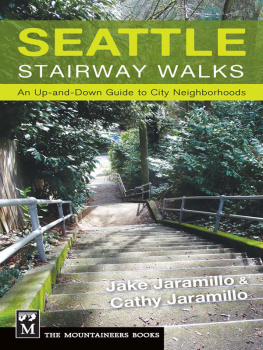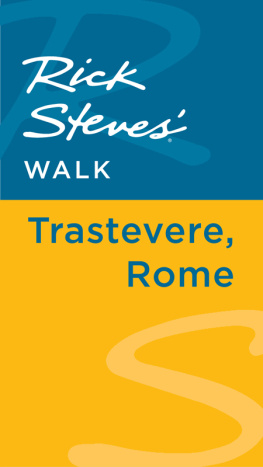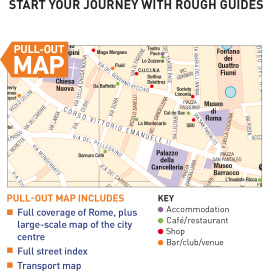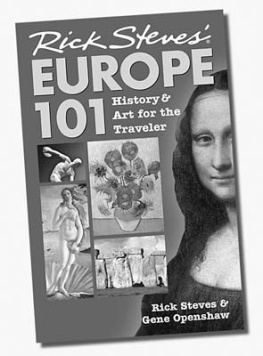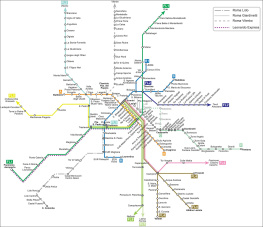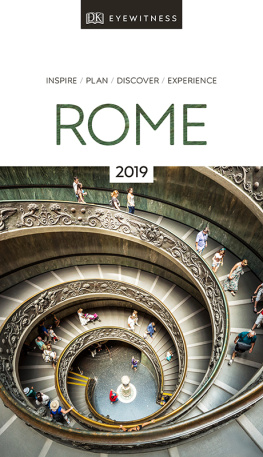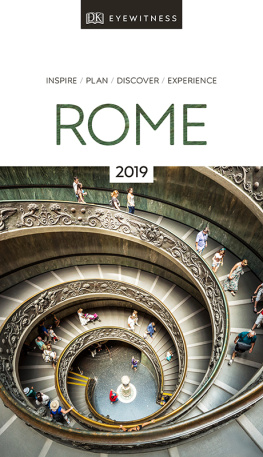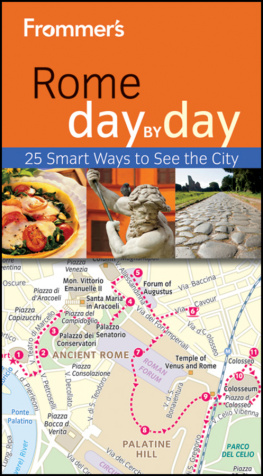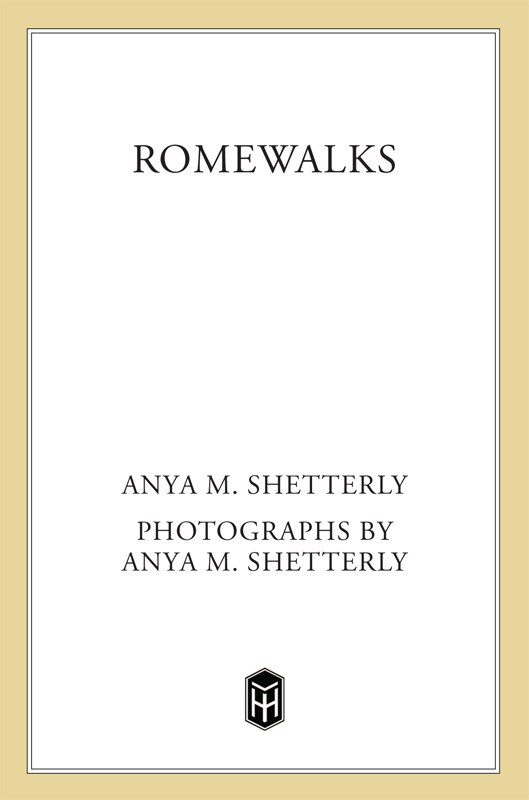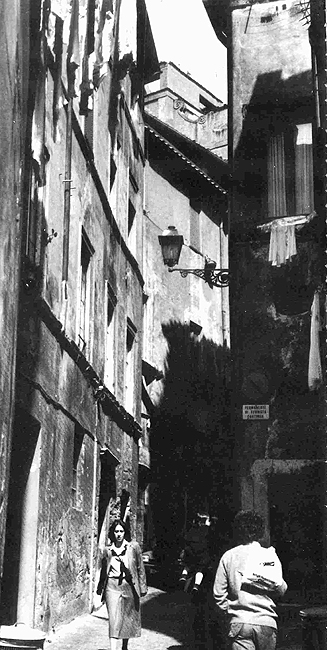

The author and publisher have provided this e-book to you for your personal use only. You may not make this e-book publicly available in any way. Copyright infringement is against the law. If you believe the copy of this e-book you are reading infringes on the authors copyright, please notify the publisher at: us.macmillanusa.com/piracy.
Contents
To the many friends who were there for me
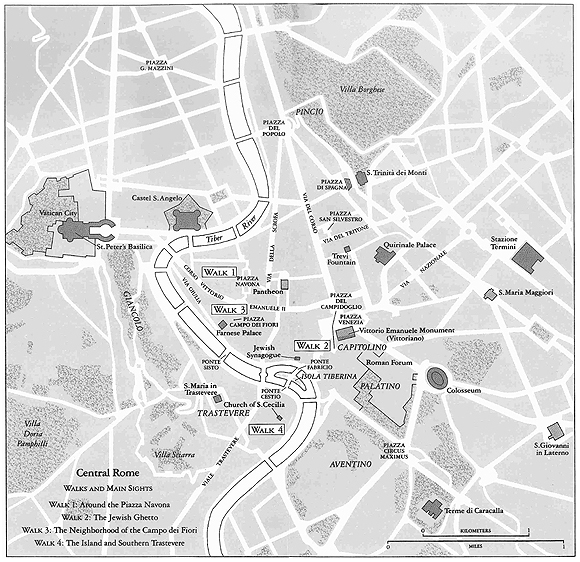
Acknowledgments
This book would not have been written without the enthusiasm, directions, and stories of many Romans: friends, acquaintances, and passersby. I also want to thank the staffs of the American Academy Library, the Ernesto Besso Foundation, the Archives of the City of Rome, and the Jewish Museum.
Most important are the thanks I owe to people who gave me the support and refuge I needed to finish this project: Tita and Steve Ostrow, Henry Berg, Harry Hives, John and Maryon Drenttel, and my parents, Pat and Howard Shetterly.
I am grateful to Marty Peretz for suggesting the idea of Romewalks; To Marc Granetz, the editor of this book, for his patience and good humor; and to Pamela Christy, George Watkins, and Kevin Scott for their help.
Before I left for Rome, Kate Costello said, You should write a book. Little did she realize that she would one day help me type the final draft. Thanks for the hint, the bed, and the typing.
Finally, a warm thanks to Carolyn Ervin, ever the best of friends.
Introduction
Henry Jamess reaction was: It beats everything: it leaves the Rome of your fancyyour educationnowhere. I went reeling and moaning through the streets in a fever of enjoyment the effect is something indescribable. Rome has provoked this kind of excitement in many people, myself included. To a large degree this response is due to surprisethere is just so much more here than we ever expectbut it is also caused by confusion. Scattered throughout the citys historic center are layers of images associated with two and a half millennia of history. Even when something appears to belong to a definite period, a second glance often betrays a bewildering span of centuries. Nowhere in central Rome is there a sense of a well-planned city; instead, it is a fragmented and untidy city which has been that way since the days of the Roman republic. While the urban plans of the sixteenth and seventeenth centuries placed a great value on organization, they were ultimately exuberant and far from comprehensive. Especially today, after the spotty additions of the republicans at the turn of the century and the Fascists in the 1920s and 1930s, the effect is one of a careless blend of contrasting plans, styles, and ideas. This collage, so dominant in the visual landscape, is Romes fascination. It bespeaks the very spirit of the city, for Rome is not just a monument to history, art, architecture, or Western civilization; it is a city of people who have used and reused their monuments and buildings to create pockets of community life.
That these communities have endured makes Rome different from most cities and adds an emotional richness to her already recognized physical drama and beauty. Her neighborhoods are never defined simply by socioeconomic or physical boundaries. Although the city is formally divided into twenty-two quarters, or riones, some of which have existed since the Roman Empire, these are artificial distinctions. Instead, neighborhoods are defined more by shared culture and history. And, because it is Rome, by the buildings themselves.
While not a comprehensive guide, this book presents a specific and intimate view of Rome, one that derives from my own experience of the city. The four walks here through neighborhoods of the historic center of Rome are among the most satisfying ways to learn about the citys past and present. They are also a good way to organize the myriad images and to understand the many transitions in the citys growth. Rome has so much to offer, and these walks will satisfy your desire to sightsee, shop, and just wander. The streets themselves are like display cases, inviting your close attention.
I have chosen four neighborhoods to explore: the Piazza Navona, the Jewish Ghetto, the Campo dei Fiori, and the southern end of Trastevere. Each of these neighborhoods shows a different perspective on the life and history of the city. Each is also rich in tradition, culture, architecture, and charm.
The neighborhood of the Piazza Navona forms a semicircle around one of Romes most important and beautiful landmarks. Located in the heart of the ancient Roman Campus Martius, this neighborhood of baroque churches and intimate, narrow streets packed with small houses reflects the areas status as a prosperous bourgeois and artisan quarter dating from the late sixteenth century. Today it is still considered an artisan district and one of the most elegant sections of central Rome. For the last two centuries this neighborhood has been famous for its antique trade; the main streets are filled with fancy antique shops, and on the smaller side streets are numerous artisan shops specializing in the making or restoring of antique furniture and art. It is an education to pass these studios, which during the summer expand onto the cobblestone streets. One learns to appreciate the painstaking labor involved in refurbishing an old desk encrusted with aged lacquer, dirt, and paint; or that of chiseling away at a block of dark pink marble to form, eventually, a bust of one of the heroes of the Roman Empire. If youre lucky you may even observe a master teaching his apprentice how to wax the back of a canvas painting that is being rematted.
In her book Rome and a Villa, Eleanor Clark says of the old Jewish Ghetto that nowhere in Rome is one so acutely aware of the ancient city that lies buried beneath. This is a part of town where the ruins of the Roman Empire blend dramatically and unpretentiously with the multifaceted cityscape of modern Rome. During the Roman Empire this area was crowned with important buildings: the Circus of Flaminius, used for horse races and triumphal court; the Portico dOttavia, a meeting place that included temples, libraries, and exhibition halls; the Teatro di Marcello, said to be the model for the Colosseum; and the Foro Holitorium, the vegetable market and its adjoining temples. Except for the Circus of Flaminius, the ruins of this period are not only visible, but have been recycled at various points in time for modern use. Their wonder lies in the fact that they do not stand just as museum pieces.
The history of this neighborhood is closely tied to that of the Jewish population in Rome. Though the Ghetto is long gone this remains a predominately Jewish neighborhood. The synagogue dominates the banks of the Tiber, the restaurants specialize in Roman Jewish cuisine, and only three shops in one area are owned by non-Jews. Nowhere else in Rome is the passeggiata, the traditional evening walk, taken so seriously. The entire community gathers on one street; they create such a boisterous scene that a Roman friend of mine, unfamiliar with the neighborhood, was sure a demonstration was taking place.
An interesting characteristic of Roman life in the centro storico, center-city, is the degree to which the city is shared by the rich and poor alike. When I first moved to Rome I lived on what is considered by many to be the equivalent of Manhattans Sutton Place, studded as it was with the palazzi of Marchesa so-and-so and Prince whatever. Yet in the same building, and around the corner, my neighbors were working-class people in the hardiest sense of the wordnot the servants of Via Giulia, but the bus driver, pastamaker, local bag-lady, mechanic, and on up the social scale to the schoolteacher, lawyer, and Valentino model. Together, these were the clients for early morning cappuccino at the local bar. The neighborhood surrounding the Campo dei Fiori is typical of this phenomenon. Although it is an area of sharp contrastsRenaissance Rome at her secular best mixed with aging medieval streetsarchitectural distinctions no longer clearly define economic status.


